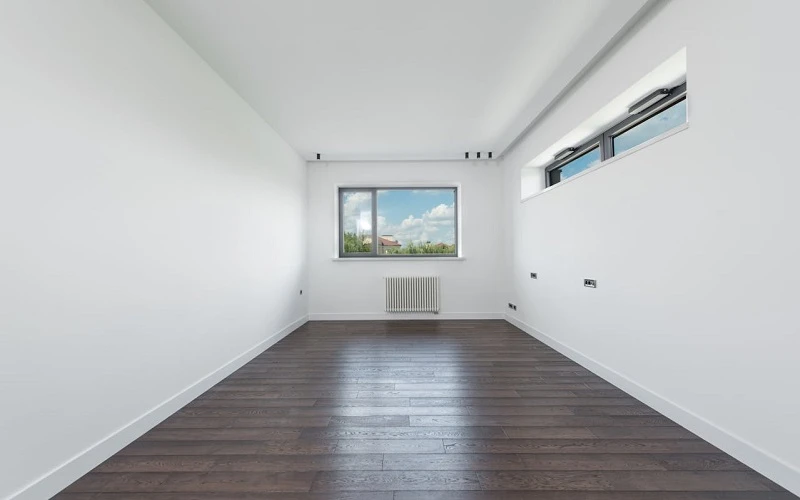Homeowners across the country are grappling with rising energy costs. Utility companies are adjusting rates in response to supply issues, inflation, and unpredictable demand spikes. At the same time, more people are working from home, meaning the thermostat wars that used to stay at the office are now being waged in your own hallway. Comfort has become personal—and expensive.
And when your home stops working the way it’s supposed to, the problem rarely fixes itself. In this blog, we will share how to recognize the early signs of heating trouble, what they really mean, and how to fix the issue before it turns into a full-blown emergency that drains both your wallet and your patience.
When the Comfort Doesn’t Match the Thermostat
Let’s start with the obvious red flag: temperature imbalance. One room is freezing, while another is fine. You crank up the heat, but that cold corner never warms up. What’s going on?
It could be a blocked vent or furniture shoved in front of it. It could also be something more serious—like leaks in your ductwork, a failing blower motor, or insulation that’s lost its effectiveness. Many people assume these issues are just quirks of their house. They’re not. They’re signs your system isn’t distributing heat properly.
That uneven comfort is more than an annoyance. It forces your system to work harder to “catch up.” And when your system’s overworking, your bills rise. Add in unusually cold weather, and you’ve got a perfect storm of high costs and low comfort.
This is where the right help makes all the difference. If you’ve noticed inconsistent warmth, strange noises, or your heating system cycling on and off too often, it may be time to call in reliable heating services. A trained technician can identify airflow issues, test your thermostat’s accuracy, and inspect your system’s performance from top to bottom. Often, the fix is simpler than expected—but only if it’s caught early.
Why the Problem Isn’t Always Where You Feel It
Here’s the tricky part: the symptoms don’t always show up where the issue lives. That cold corner in your upstairs guest room? It might be due to a duct connection under the house that’s come loose. Or maybe your furnace filter hasn’t been changed in months and is choking airflow throughout your home. One homeowner replaced their entire thermostat before realizing the problem was a disconnected return vent behind a bookshelf.
Heating systems are like puzzles. If one piece shifts, the others compensate until they can’t anymore. And just because you feel cold in one spot doesn’t mean that’s where the issue starts.
The same goes for rising bills. When your utility company raises rates, sure, your costs will go up. But if your usage is also spiking—when you know you haven’t changed your habits—that’s worth investigating. Are your windows sealed? Is warm air escaping through your attic? Has your system been tuned up in the last year?
A good inspection doesn’t just look at the furnace. It checks the entire delivery system, from intake to output, and evaluates how well your home holds onto the air it’s paying to heat. It’s one of the best ways to save money long-term.
When DIY Is Fine—and When It Isn’t
There’s a lot you can do on your own. Start by checking your air filters. Dirty filters restrict airflow and make your system work overtime. They should be changed every 1 to 3 months, depending on your system and usage.
Next, make sure all vents are open and unblocked. You’d be surprised how many people close vents in unused rooms, thinking it saves energy. It doesn’t. It can actually throw off the pressure balance and reduce your system’s efficiency.
Also, take a look at your thermostat’s settings. Is it on a schedule that reflects your current lifestyle? If you used to leave for work at 8 a.m. but now work from home, that morning setback temperature might not make sense anymore.
But when your system isn’t heating evenly, keeps turning off early, or is making odd noises—don’t try to muscle through with YouTube videos. That’s when to call a professional. What looks like a simple issue could point to a deeper problem. Catching it early keeps costs down and avoids more damage.
The Bigger Picture: Efficiency and Resilience
This isn’t just about comfort. It’s about resilience. As energy costs climb and weather patterns become less predictable, our homes need to work harder to keep us safe and sane. A poorly performing system isn’t just inefficient—it’s fragile. And in a sudden cold snap, that fragility can become a real problem.
In recent winters, power grids in parts of the U.S. have faced unexpected strain. Homeowners with well-maintained, efficient systems didn’t just stay warm. They used less energy during peak hours, helping reduce the burden on the grid. That’s not just good for them—it’s good for their communities.
Tuning up your heating system, sealing your home properly, and getting ahead of repairs is more than a to-do list. It’s a strategy. It’s about creating a home that responds well under pressure, saves money year-round, and keeps you comfortable no matter what’s happening outside. It’s how you stay in control—even when the weather, or your utility bill, tries to say otherwise.
Bottom Line
The bottom line? That cold spot in the hallway or the bill that doesn’t make sense? Don’t ignore it. It’s your house trying to tell you something. And like most warning signs, it gets louder the longer it’s left alone.
Comfort isn’t just a luxury. It’s a signal. When your home stops feeling “right,” it’s time to act. Catching issues early saves money, stress, and sometimes even your health.
So pull out the filters, check your vents, and schedule that inspection if something feels off. Your future self—in a warm, evenly heated living room—will thank you.




